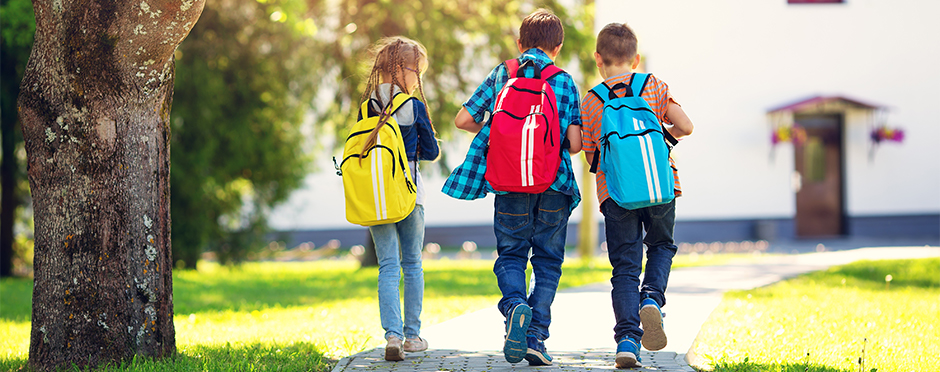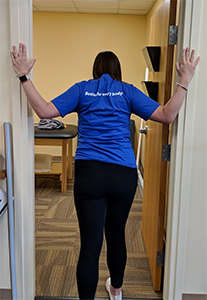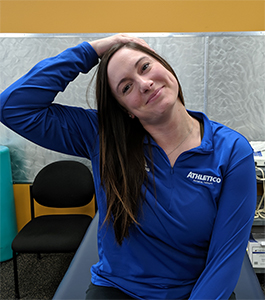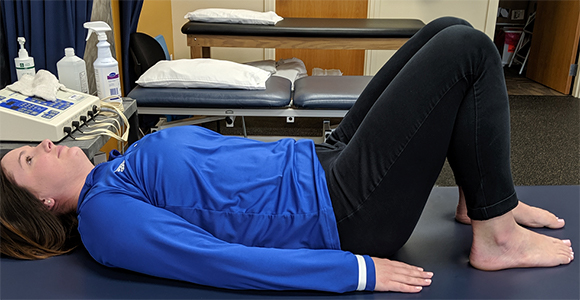
Backpacks and Back Pain
Leave a CommentIt’s back-to-school season. Parents and kids will be shopping for school supplies and one item on many lists will be a new backpack. Before heading back to school, parents and kids should know there are recommended and not recommended ways to wear and use a backpack. Improperly fit backpacks or backpacks that are too heavy can lead to poor posture. Poor posture can be a cause of low back or neck pain.
Research has shown that the daily physical stress of carrying a backpack can lead to significant forward lean of the head and trunk and changes in spinal curvature.1,2,3 A main component of this is related to the weight of the backpack, which is an aspect we can control through our actions (i.e. putting fewer items in the backpack). Another factor that changes the body’s response to carrying a backpack is placement. Carrying a backpack lower on the back can lead to more spinal flexion forward than a backpack centered in the thoracic region. However, oftentimes young children prefer to wear their backpacks lower.
Children are still growing and do not have full musculoskeletal strength developed yet. They are often going through rapid physical changes as well. These factors may increase the risk of injury in adolescent backs. Adult populations who carry heavy loads on their back (i.e. firefighters) have decreased risk of injury as they are trained for the forces their body will carry. Children are not specially trained to carry heavy backpacks, yet many do so almost daily. Fortunately there are ways we can help decrease the risk of back pain in children, including ensuring a proper fit and wear.
How a Backpack Should Fit:
- Backpacks should be worn with both straps
- The weight should be evenly distributed across both shoulders
- The backpack should sit high on the back and not drop below the waist
- A chest strap can help to distribute weight and prevent the bag from swaying on the back
- Place heavy items in the bottom of the bag or in the pocket closest to the body
- The bag should not move side to side when walking
A backpack ideally should not exceed 10 percent of a child’s weight.3 This is challenging for many school aged children, as textbooks can weigh 3-5 lbs each, plus items like binders, folders, tablets or laptops may also be in the backpack.
Ways to Reduce the Weight of Backpacks:
- Try not to bring electronics or items not necessary to school
- Only bring textbooks if necessary for that day, otherwise leave them at home
- Have a folder for all homework for that day, instead of separate folders for each class which can become heavier throughout the semester
- Use a locker at school to store textbooks
- Use study halls at school to finish homework to limit the number of textbooks needed to carry back and forth from home to school
- Consider a rolling backpack if backpack is consistently too heavy
Stretches to Help with Back Pain:
Doorway Stretch
- Stand in a doorway and place hands on the door frame, take a short step forward, keeping the arms on the door until stretch is felt across the chest and front of the armpits. Hold for 30 seconds and perform three repetitions.
- Tip: Place hands at varying heights to feel the stretch in different areas of the muscles.

Upper Trapezius Stretch
- Bend neck with ear pushing toward the shoulder while still looking forward until a stretch is felt on the side of the neck. Put hand on top of head to provide gentle pressure for more of a stretch. Perform on both sides for a 30 second hold and three repetitions.

Posterior Pelvic Tilt
- This exercise is good for core muscles across the abdomen that also attach to the spine. Begin by lying on back on the floor or bed with both knees bent and feet flat on the floor. Tighten muscles near belly button, flattening low back against the ground so there is no space. The pelvis will rock backward with this muscle activation. Continue to breathe normally while holding this position for 10 seconds; repeat 20 times.
- Tip: Use these same muscle near the bellybutton when picking up or carrying a backpack to decrease the strain on your back.

If your child has pain due to backpack use, contact your closest Athletico clinic and schedule a free assessment. Our experts will assess your child’s condition and provide recommendations for next steps.
The Athletico blog is an educational resource written by Athletico employees. Athletico bloggers are licensed professionals who abide by the code of ethics outlined by their respective professional associations. The content published in blog posts represents the opinion of the individual author based on their expertise and experience. The content provided in this blog is for informational purposes only, does not constitute medical advice and should not be relied on for making personal health decisions.
References:
1. Chansirinukor W, Wilson D, Grimmer K, Dansie B. Effects of backpacks on students: measurement of cervical and shoulder posture. Aust J Physiother. 2001; 47: 110–116
2. Orloff HA, Rapp CM. The effects of load carriage on spinal curvature and posture. Spine.
2004; 29: 1325–1329.
3. Chen YL, Mu YC. Effects of backpack load and position on body strains in male schoolchildren while walking. PLoS One. 2018;13(3):e0193648. Published 2018 Mar 21. doi:10.1371/journal.pone.0193648
